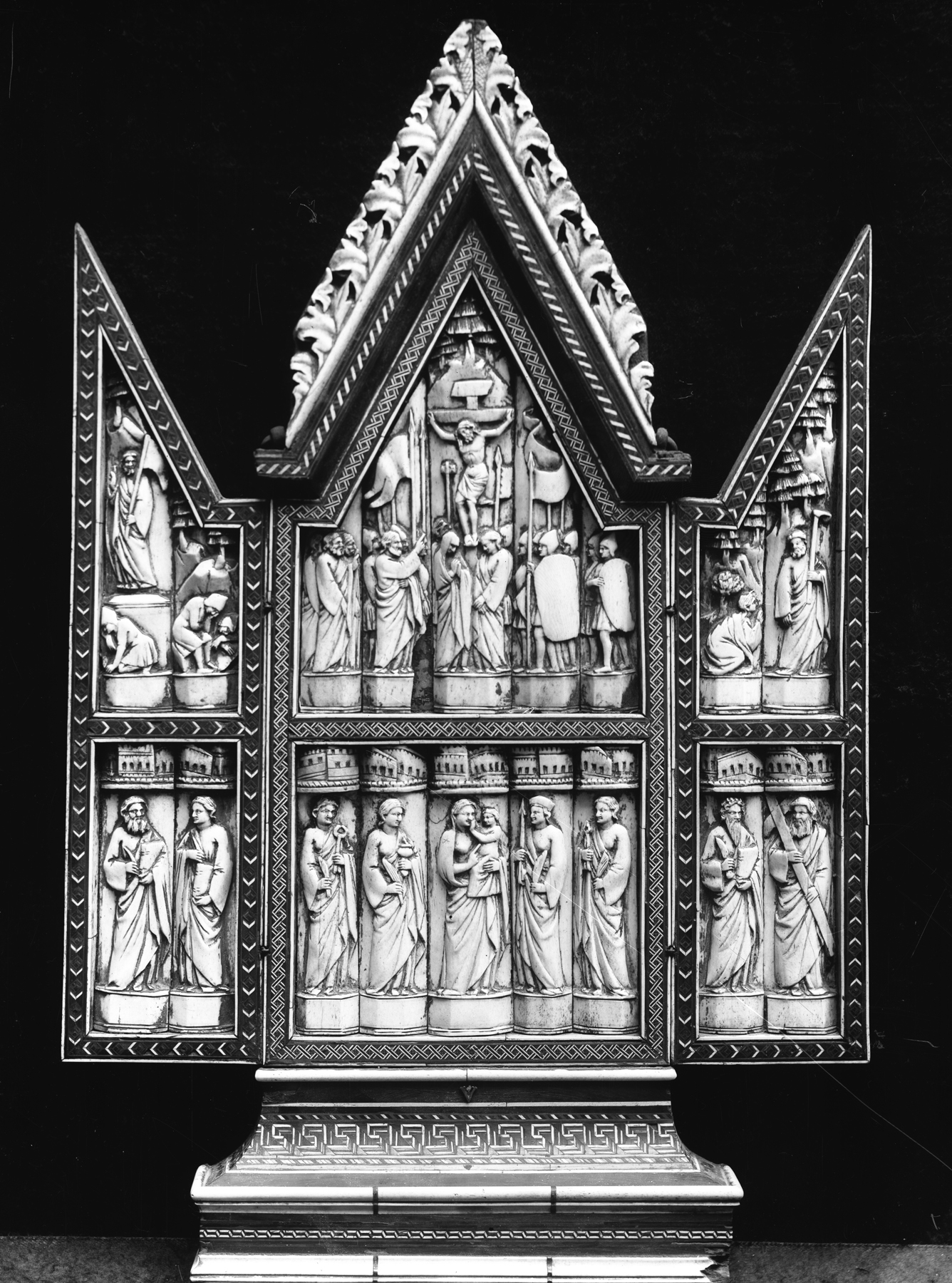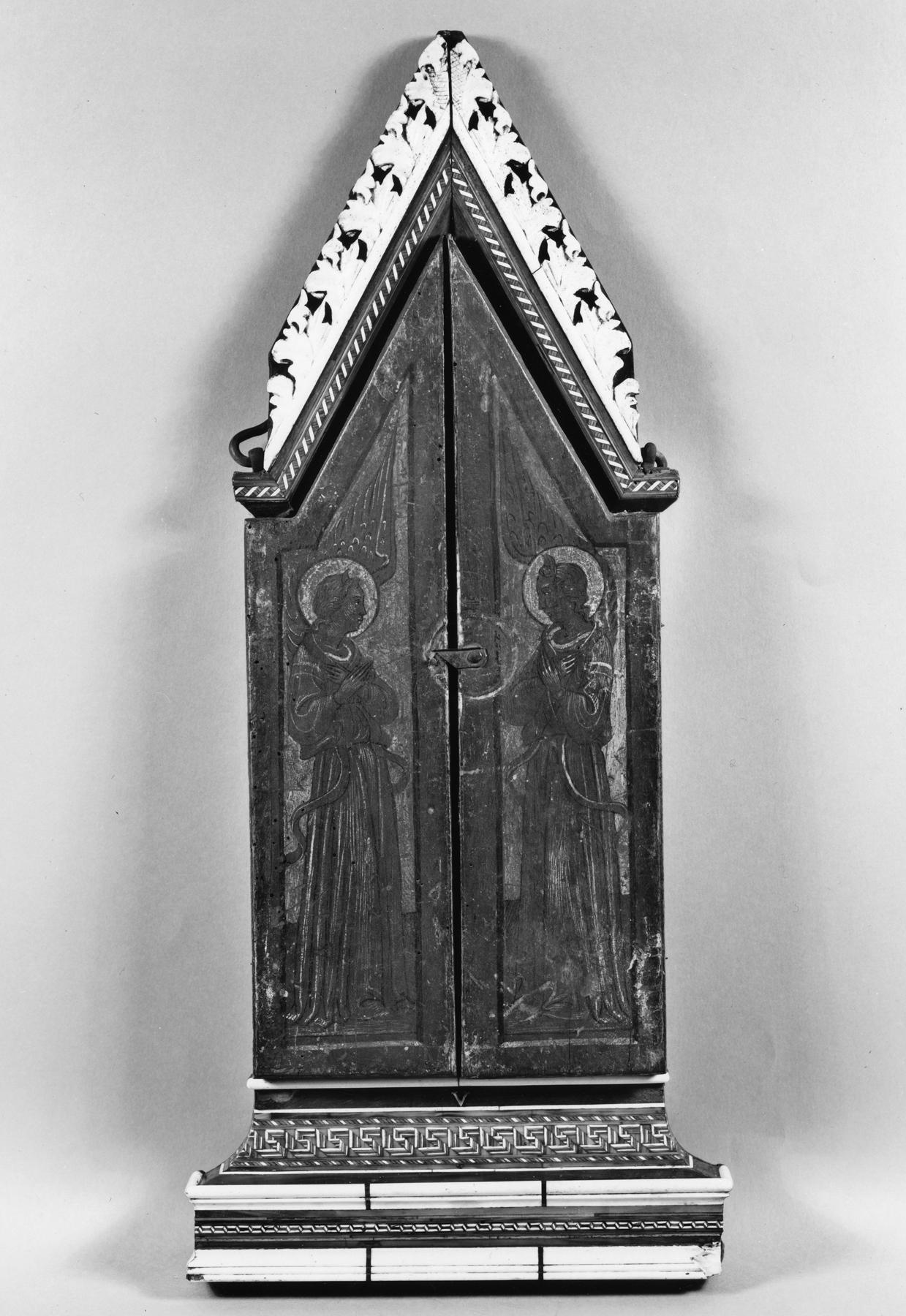Triptych with the Crucifixion and Other Scenes
(Medieval Europe )
This triptych is made of eighteen bone plaques set in an elaborate intarsiated framework. The Embriachi workshop in Venice was known for the production of triptychs and caskets assembled from pre-carved and largely interchangeable pieces. This way of production, together with the use of cheaper materials such as bone instead of ivory, resulted in a lower cost and made these object affordable for a larger audience.
This small altarpiece would have been used for private devotion. The carving on the inside shows the Crucifixion, flanked by the Resurrection on the left and Christ's Appearance to the Magdalen on the right. Below, the central figure of the Virgin, holding the Christ Child, is flanked by Saint Ursula and Saint Apollonia on the right and Saint Lucy and Saint Agatha on the left. In the wings are the Apostles Bartholomew and Philip on the right and Evangelists Matthew and John on the left.
The outside of the wings are painted with two angels in 'grisaille' (grey tones) on red ground, probably by a later artist.
Provenance
Provenance (from the French provenir, 'to come from/forth') is the chronology of the ownership, custody, or location of a historical object. Learn more about provenance at the Walters.
F. Ongania, Venice [date and mode of acquisition unknown]; Henry Walters, Baltimore [date of acquisition unknown], by purchase; Walters Art Museum, 1931, by bequest.
Exhibitions
| 1997 | Images in Ivory: Precious Objects of the Gothic Age. The Detroit Institute of Arts, Detroit; The Walters Art Gallery, Baltimore. |
Geographies
Italy, Venice (Place of Origin)
Measurements
H: 23 5/8 x W: 15 3/8 in. (60 x 39 cm)
Credit Line
Acquired by Henry Walters
Location in Museum
Not on view
Accession Number
In libraries, galleries, museums, and archives, an accession number is a unique identifier assigned to each object in the collection.
In libraries, galleries, museums, and archives, an accession number is a unique identifier assigned to each object in the collection.
71.98




